Winner
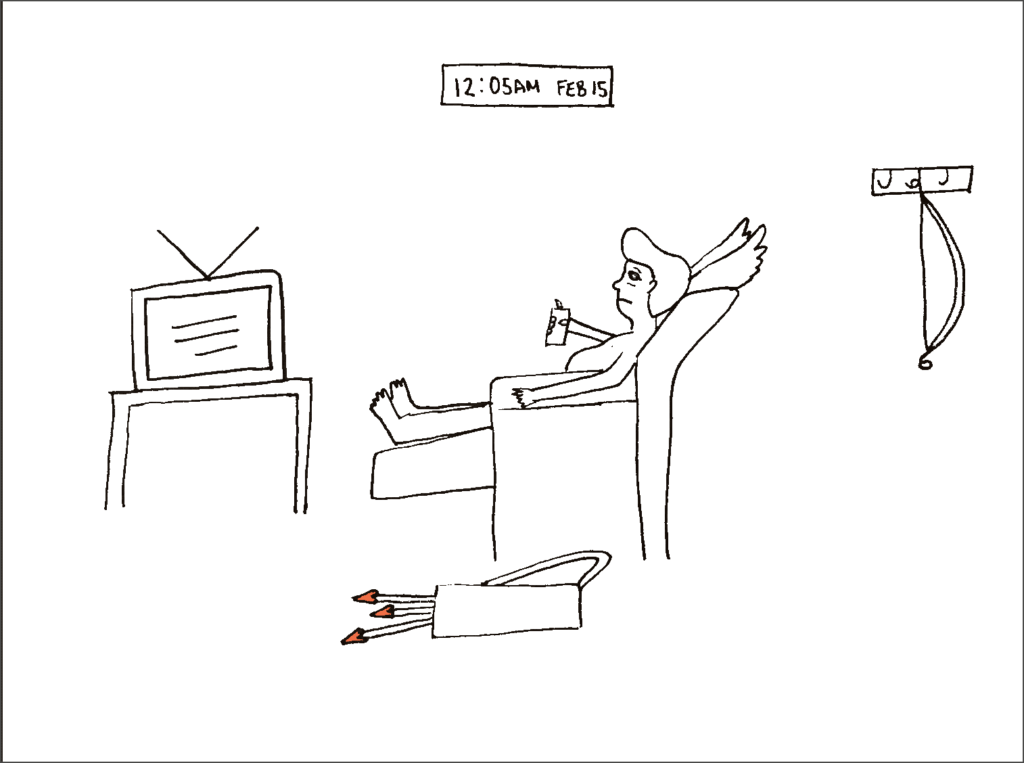
“Another job replaced by an app.” – Bobby, Pittsburgh, PA
Winner

“Another job replaced by an app.” – Bobby, Pittsburgh, PA
Winner

“Did you hear Mary Poppins is retired and living in Miami?” – Lesley, Cleveland, OH
Winner

“Cheers to whatever year it is.” – Carla Ponting
Winner
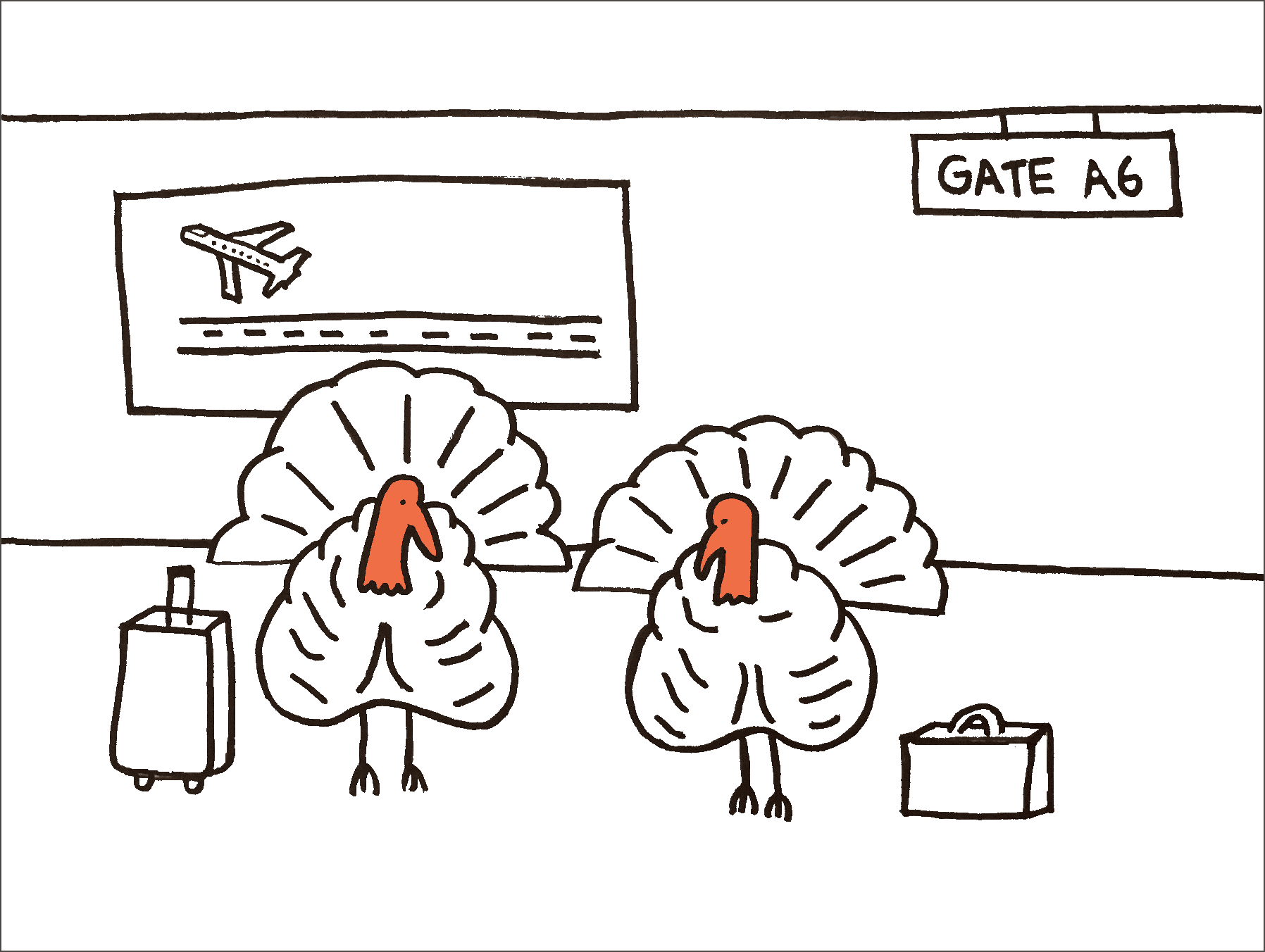
“Gobble?” “Gobble.” – Eric, Ann Arbor, MI
Winner
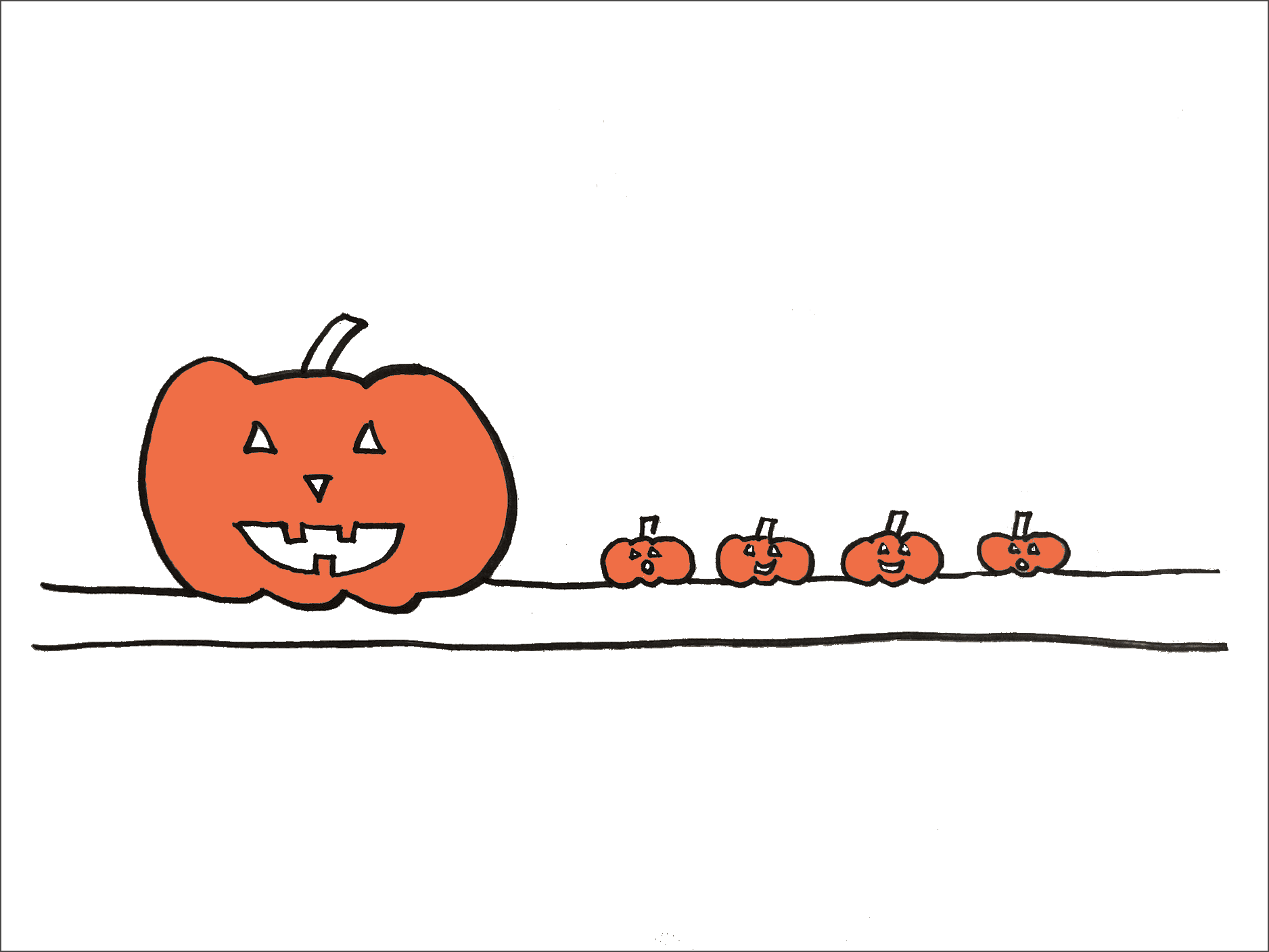
“When I grow up I want to be a pie” – Sam, Philadelphia, PA
Winner
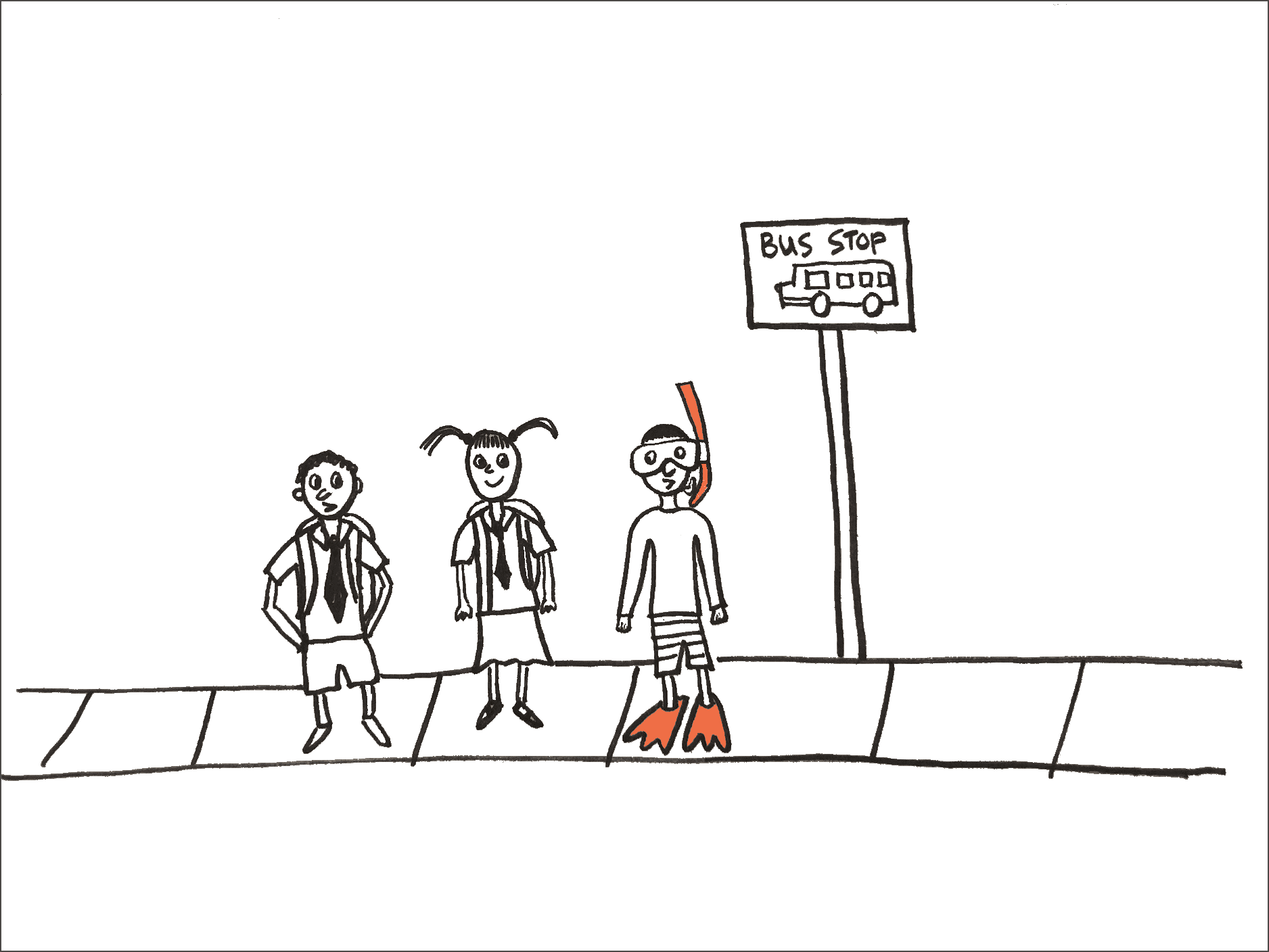
“My Mom said 3rd grade is where you sink or swim” – Johnny, San Juan, PR

Friday, April 22nd is the big day for this blue marble. The theme for Earth Day 2022 is ‘Invest in Our Planet’. And the focus is on “accelerating solutions to combat our greatest threat, climate change, and to activate everyone – governments, citizens, and businesses – to do their part.” A reminder that it’s our collective responsibility, and we’re running out of time.
Here I’ll break down 3 ways you can invest in the planet this Earth Day, and beyond.
Time. We only get so much of it. And there are many things vying for our attention all the time. As author Zadie Smith says, “time is how you spend your love”. Here are a couple ways to show the planet our love this Earth Day, by taking the time to care for it.
Participate in the Great Global Cleanup on Earth Day. Earthday.org has an interactive map to find a clean up near you and other events happening in your city.
Our small acts add up. Things like using a reusable water bottle, buying local food and eating what’s in season, taking reusable bags to the grocery store, avoiding fast fashion and buying less stuff.
Learning and talking about the climate crisis with our family, friends, and community is incredibly important. This is how we increase collective accountability and build pressure for businesses + elected officials to take climate action.
Earthday.org has a ton of fact sheets on a variety of environmental topics from plastic pollution to the importance of bees. Or stay up-to-date on environmental policy and climate change news with these trusted resources.
Bring it up with friends and family, and share what you’re learning. People trust people they know and it helps spur collective action. Remember to come from a place of empathy and understanding.
Sign petitions, write your representatives, vote for elected officials that support climate action.
Money talks. Where and how we spend our money is important, and an opportunity for us to align our finances with our goals for a healthier planet.
This is a great overview of ways to do this, from having a green investment strategy to sustainable banking.
Support nonprofit organizations that are addressing the climate crisis.
There is certainly no shortage of ways to invest in our planet. I hope you’ll find a way to do so this Earth Day, and every day!
Looking for last minute holiday gifts or a way around the supply chain drama? Consider the gift of giving!
The gift cards are one time purchases (not recurring).
The recipient can use the gift card towards setting up a monthly donation to a cause on PennyLoafer, or opt for a one-time donation to a cause.
When you order a gift card, you’ll choose the amount and provide the following information:
You’ll receive an email with a PDF attachment within 24 hours that includes the personalized gift card and instructions on how it works (see below). You decide when and how you gift it!
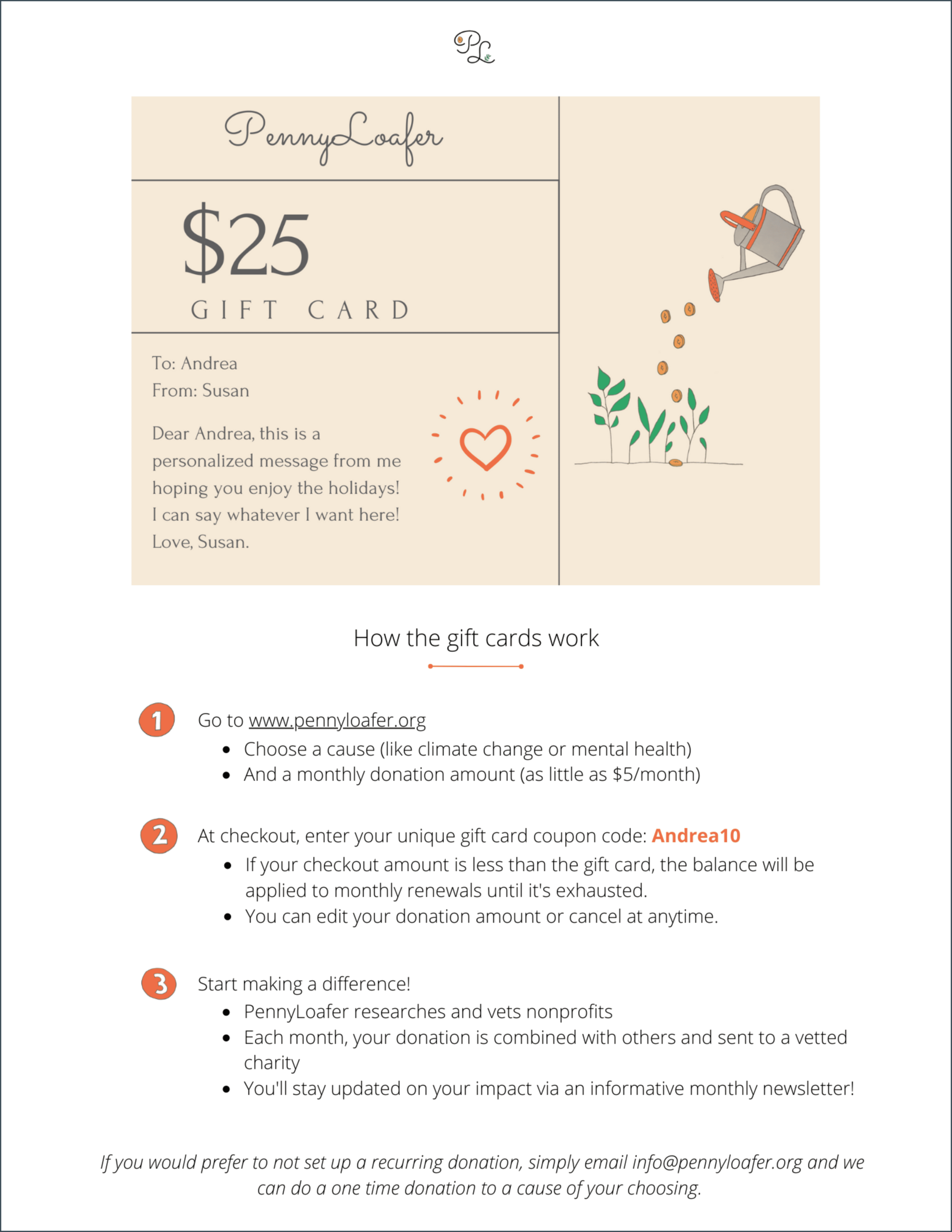
Happy holidays and thanks for considering to #GiftGiving this holiday season!
November 10, 2021
Here is the world.
Here is the world in a pressure cooker.
It’s called science!
You’ve likely been following the headlines about the UN Climate Change summit (COP26), the most consequential gathering of world leaders since the Paris Agreement. Or Big Oil’s decades long climate misinformation campaign.
These stories come on the heels of a report released by the United Nations’ Intergovernmental Panel on Climate Change that offered the most up-to-date physical understanding of climate change and issued a ‘code red’ for the planet.
It’s enough to want to crawl under your blanket and watch TikTok videos until you lose track of time and space.
Well, the good news is there are better things we can do.
I know that when looking for ways to help it can feel overwhelming to sift through the sheer volume of information on the internet.
Before I jump in, I’d like to make 3 notes:
Let’s do it!
The following are two newsletters I’ve found helpful. I know there are so many resources that deserve to be mentioned here, but again I want this to be digestible and doable. It’s also convenient that these are delivered to your inbox.
The Crucial Years by Bill McKibbin
With Loved ones: It’s often easier to avoid uncomfortable conversations, but one of the most important things we can do is talk about climate change with friends and family. People trust people they know and it helps spur collective action. Remember to come from a place of empathy and understanding.
With Community: Climate change is a collective problem, that’s why collective action is so important.
With your Representatives: Writing and calling your representatives tells them fighting climate change is important to their constituents. Get involved in local campaigns and vote for representatives that support climate action.
A good place to start is quantifying your carbon footprint. The University of California-Berkley’s CoolClimate calculator can help you. Take stock of your behavior and consumption habits.
Then there are a number of changes you can make to lower your individual carbon footprint, including eating less meat, driving less and walking, biking or taking the bus more, and avoiding fast fashion and buying less things.
Carbon offsets are another option. It’s essentially investing in projects that reduce or capture greenhouse gases to compensate for personal emissions.
There are many amazing nonprofits working to mitigate the impacts of climate change.
Below are 3 nonprofits we’ve supported on PennyLoafer, and why.
If you like these nonprofits and are interested in a simple way to regularly support the planet, consider supporting the climate change cause on PennyLoafer, and let us do the work for you.
Each month, your donation will be combined with other supporters and sent to a vetted nonprofit addressing climate change. You’ll learn along the way via an informative monthly newsletter. We also don’t take any percentage of the donation, so that your money is going to the charities. Join us in creating a more sustainable world!
Ah, the age old question: what do I get?
I’m happy you asked.
Perhaps you’ve been on the fence about signing up for PennyLoafer – you like the idea, but you’re not quite convinced or at least unsure of the benefits.
The real benefit of PennyLoafer is how easy it is to support the cause(s) you care about most – proactively and on a regular basis. Not just when dooming headlines occur or someone asks it of you.
In short, you can expect:
💡 To support and learn about different nonprofits doing amazing work
😃 To feel good about your ongoing giving strategy
🔥 To receive informative, digestible newsletters
✔️ To contribute tax-deductible donations
Ok – but what actually happens?
You join a like-minded community of donors who are supporting that cause.
Let’s say you select Climate Change and a monthly donation amount of $10/month.
At the end of every month, your donation is combined with all the other donations to that cause, and given to a different nonprofit. This increases the impact of your donation, and reduces overhead costs for nonprofits.
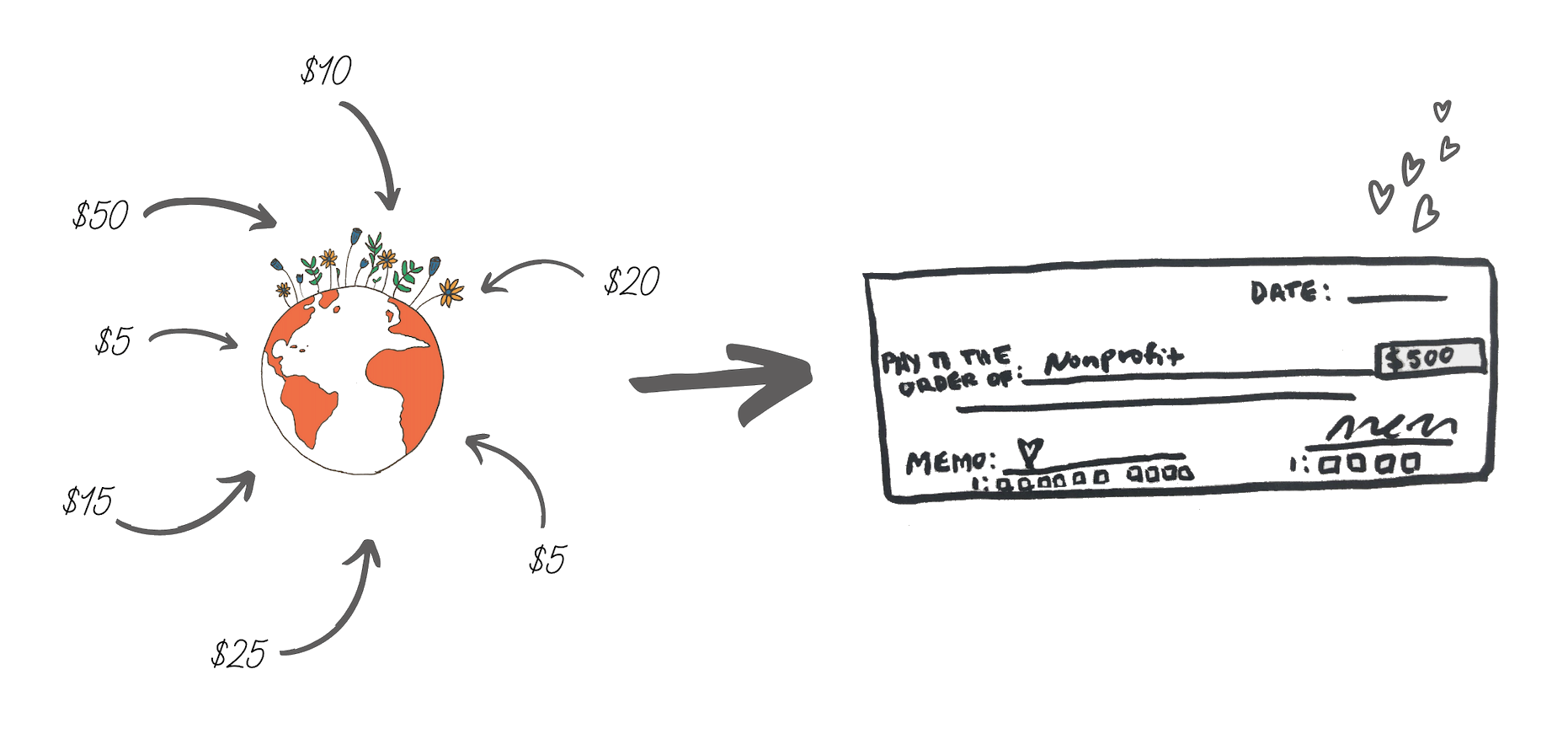
It will be specific to the cause you’re supporting. In this example, you and everyone else supporting the Climate Change cause would get the Climate Change newsletter.
Below is an example of what this newsletter might look like – and I’ll break it down section by section.
Classic greeting and setting you up for reading success.
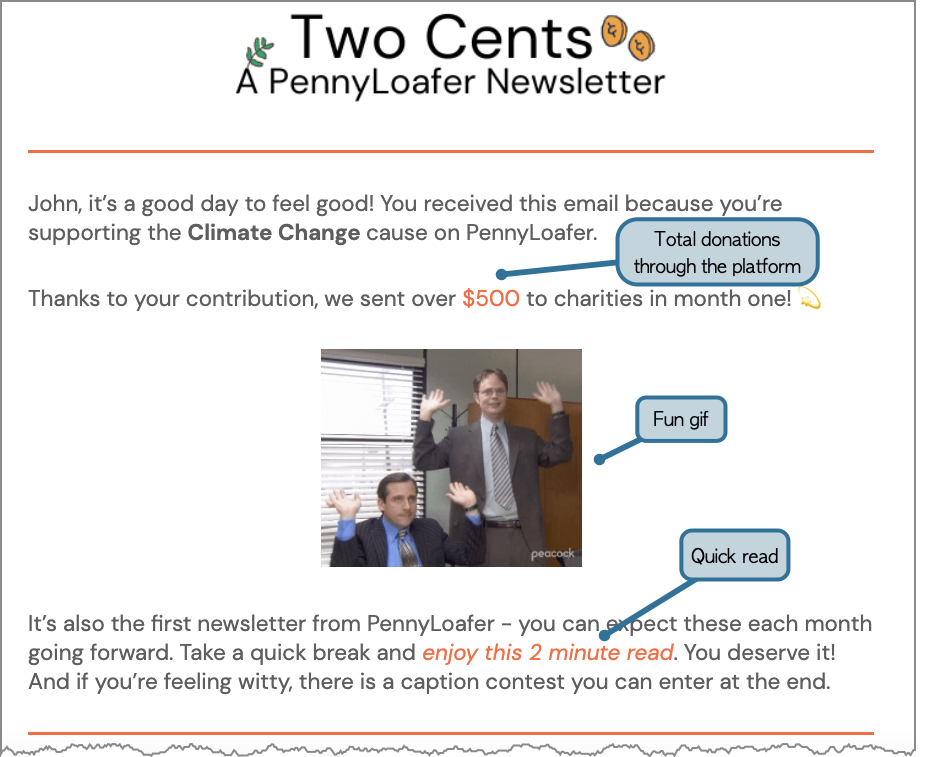
Here we’ll tell you where your donation is going and more information related to the nonprofit, such as their leadership, strategy and why they were chosen.
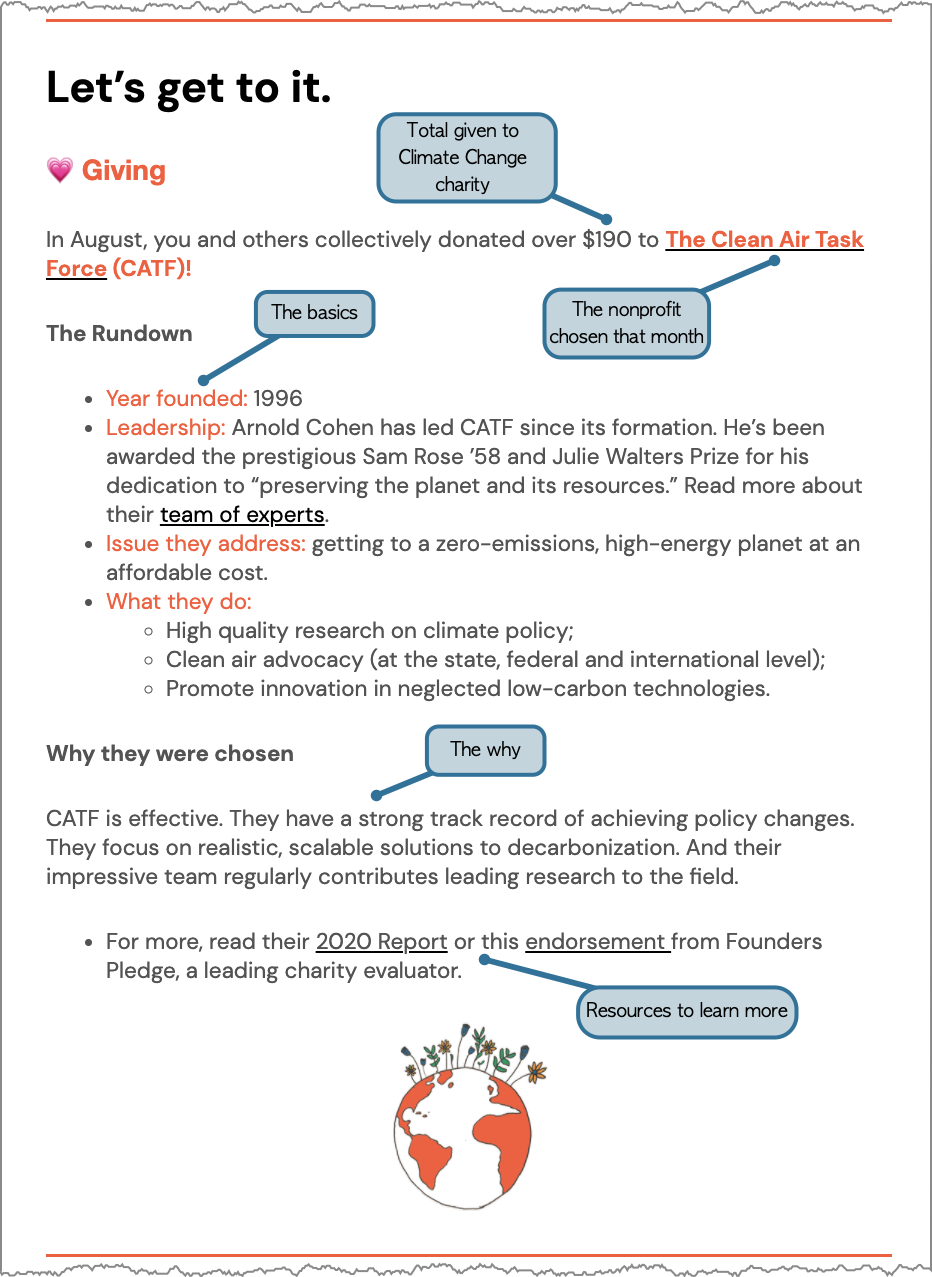
Here we’ll highlight information or news related to the cause. We may also provide some tiny actionable items, so you’re staying informed and engaged in the cause beyond your monetary contribution.
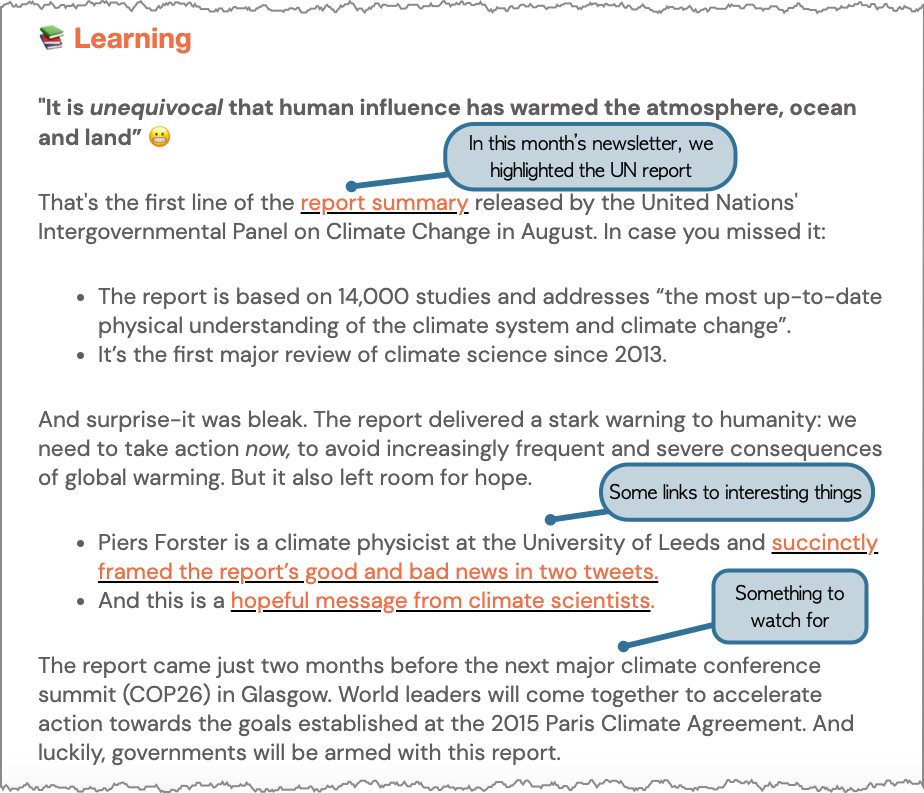
This is for all you witty people out there. If you don’t like coming up with cartoon captions, you can still participate by voting on your favorite caption from the previous month’s cartoon. Only subscribers can submit!
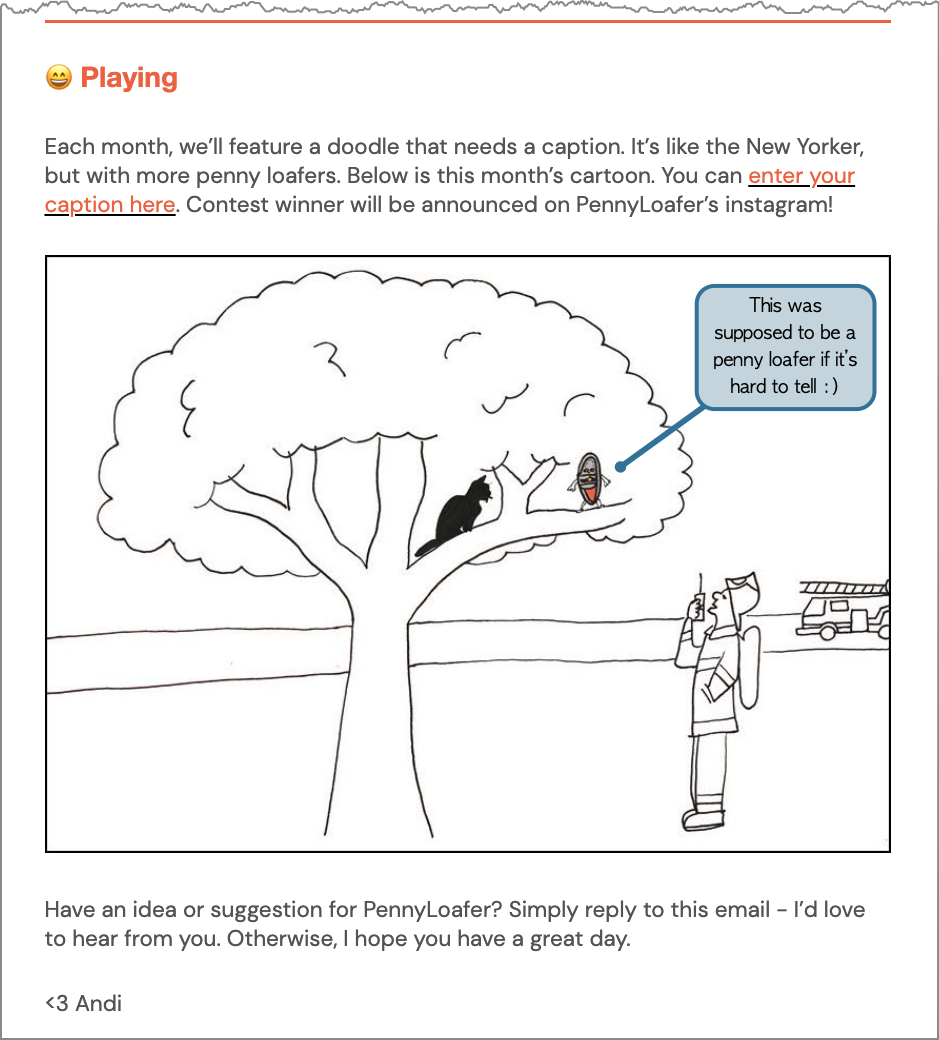
The newsletter format will likely change overtime (based on donor feedback), but this should give you a sense of what to expect when you sign up.
Our goal is to get more individual donors meaningfully connected to causes, learning and feeling like they’re making a difference.
I’d love to hear what you think or any questions you may have – please send me an email at andi@pennyloafer.org.